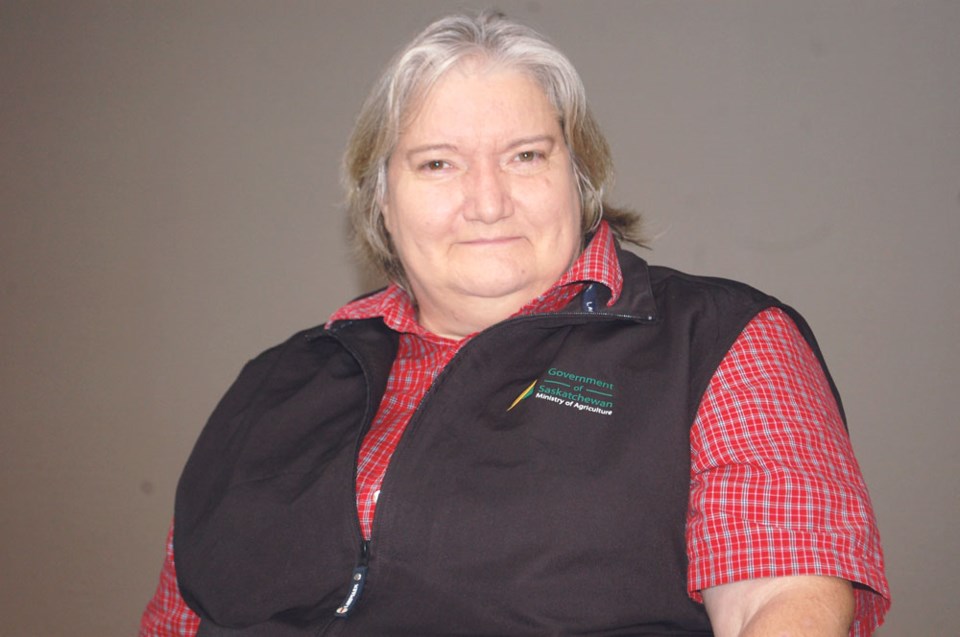The rain that fell on southeast Saskatchewan this week couldn’t have come at a better time for the region’s agricultural producers.
Sherri Roberts, a crop specialist for the Saskatchewan Ministry of Agriculture, said moisture in many fields was really getting short. The rain was too late for some pastures, but for others, it will provide a big boost.
“The fall rye and the winter wheat, some producers were already starting to head out, particularly here in the Weyburn area, and they really needed the moisture,” Roberts said in an interview with Agri News. “This is probably going to help them quite a bit.”
The driest areas were north of Fillmore and near Indian Head.
Some areas received did receive some rain when a thunderstorm rolled through on June 9, and Roberts said that will also help.
Cattle producers were also concerned about pasture land, and alfalfa producers in the Sedley and Francis areas were worried about the lack of rain.
“Some producers were thinking of not even cutting their alfalfa this year because it was so stressed,” said Roberts. “But this will take that pressure off now.”
She suggested that with some of the brome grasses already headed out, producers might want to do a first cut now, and then have a second cut later this year.
The recent rainfall should be sufficient for a little while, but its effectiveness could be diminished by high winds. If this area continues to experience strong winds, the lands will start to dry out again.
“A lot of the soil down here in the southeast does have that ability to maintain moisture for quite some time,” said Roberts. “It would be nice if in another week-and-a-half, if we got another inch, like we did last year. We started receiving rain about this time of the year, and then every week we had a nice rain, and our yields were excellent down here last year.”
Most producers have finished seeding. According to the June 8 edition of the provincial crop report, seeding was 98 per cent complete in the southeast. Ninety-four per cent of the crop is in the ground across the province.
“We came out of the chute faster than any other part of the province, and we got done faster than anyone else. Things came up really well, because we had sufficient moisture from the … snow we received, and things took off really well.”
In most years, the southwest is the area that leads the province in seeding pace.
There are a few producers in the Oxbow and Carlyle areas who had a late start to seeding due to the amount of snow accumulated during the winter, and now they’re trying to finish seeding.
Roberts said a lot of spring wheat has been planted this year. Lentils and soy beans are also popular crops.
“Soy bean acres are up again this year, and some of the lentil acres went down,” said Roberts. “Some producers dived into lentils last year in a big way, and some guys had some crashes because of some disease issues in their fields. So now they’re switching over to soy beans as a different pulse to try.”
She noted they are starting to see leaf grasshoppers, and virus problems have been appearing in the wheat in the Estevan and Oxbow areas.
“But I don’t think it’s anything that’s going to get overly severe, particularly now that we had some rain to take the water stresses off of some of the fields,” said Roberts.
Samples with possible wheat streak mosaic viruses and barley yellow dwarf viruses have been brought into the ministry’s lab for testing. In the southeast, there have been issues with soil-borne diseases such as fusarium, which resulted in producers switching around their crop rotations.
But producers in the southeast region are still feeling pretty confident about the upcoming growing season, she said, especially now that they received some rain.




